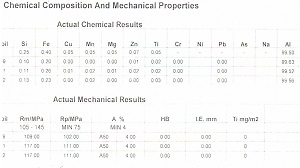How much silicon should steel have for galvanization?
To obtain a uniform galvanized layer in terms of thickness and quality, the following values should not be exceeded in the steel composition: silicon (0.12% -0.25%), phosphorus (max. 0.25%), carbon (max. 0.2%), and manganese (max. 1.5%).
In metallurgy, it is known that silicon (Si) and phosphorus (P) are elements normally added to steel to improve its mechanical properties. At the same time, these elements influence the reactivity of the galvanizing process: too high concentrations determine layers thicker than normal, of high fragility.
Silicon is frequently added as reducing agent for steel manufacturing. During the galvanization process, silicon changes the composition of zinc-iron alloy layers, so that these continue to increase over time, and the reaction rate does not decrease as the thickness of the layer increases. Phosphorus has a similar influence on the formation of the coating, but to a lesser extent.

Steel with a silicon content of over 0.04%Si leads to a pronounced increase in the thickness of the deposited layer, the maximum value being around 0.08%Si. Between 0.08% Si and 0.17 Si, the Zn layer begins to decrease. It increases again for values above 0.22%Si.
To enjoy the benefits of galvanized products, H Metal offers galvanized pipe, galvanized sheet and galvanized profiles.
The requirements of SR EN ISO 1461 include the cleaning and preparation of steel products, and hot dip galvanization. The information on the application and performance of hot dip galvanization is included in EN ISO 14713.
In terms of the reactivity of the galvanization process in relation to the steels that require quality coatings with zinc, there are four categories (quality classes according to the aspect of the surface), characterized by the percentage of silicon and phosphorus.
Category A – Si≤0.04%; P <0.02%
Steels in this category tend to have ordinary coatings with shiny surfaces. The coating structure includes the outer zinc layer.
Category B – 0.14 <Si≤0.25%; P <0.035%
Steels that are part of this class cause normal coatings but with major thickness. The aspect is still bright.
Category C – 0.04 <Si≤0.14%
Steels in this category may form excessively thick coatings (reduced impact resistance due to poor adhesion to the substrate). The coating has an obscure aspect and a coarse texture.
Category D – Si> 0.25%
Steels in this class cause excessively thick coatings (very low impact resistance), with poor adherence to the substrate. The aspect is from light gray to dark gray, with texture without the occurrence of stars.
<< Inapoi